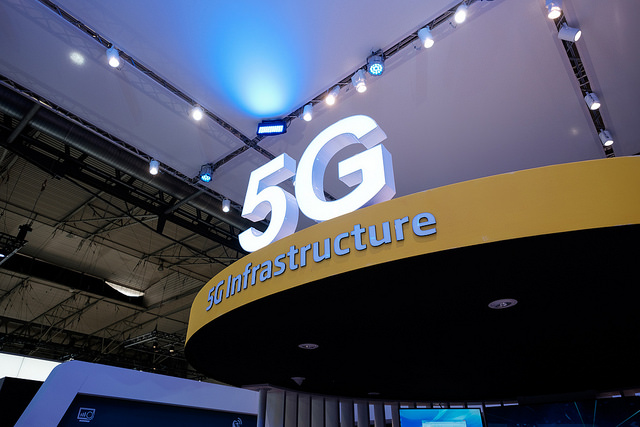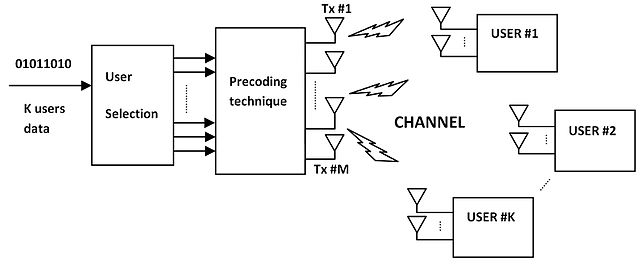When it comes to innovation humanity is like the Oliver Twist that always asks for more. The need to create a better, more convenient system leads to working on new ways of achieving the result. There have been talks of a better, faster internet which will surpass the 4G called the 5G. The issue is that many who have heard these talks may still be in the dark to what 5G technology is made of aside the much-touted dizzying download and upload speeds attributed to the new technology. In this article, I will look at the technology behind the 5G, why it is needed/uses, and some of the fears which some may have about it.
First, let us take a look at what constitutes a 5G network which primarily consists of five technologies which are: Millimeter waves, Small Cell, Massive MIMO, Beamforming, and the last Full Duplex.
The millimetre wave spectrum technology will allow the use of never before radiofrequency spectrum of the wireless radio frequency wave spectrum. If communication is analogous to cars moving on the road, the millimetre wave technology can be thought of as making a ten-way highway when the existing road was just one. Imagine how fast people can drive to their destination and the almost nonexistent the traffic gridlock will become with this new upgrade.
Currently, mobile phones, e.g. including smartphones, GPS, television, WiFi, 4G, etc. all operate within the electromagnetic wave spectrum of between 3Hz to 10GHz. But these spectrum is getting a bit jampacked with each new device added to it. The addition of these devices is already hurting the speed and latency of the connection with passing day. This seeming scarcity of usable spectrum may come as a surprise seeing the other unused spectrum above 10GHz to 300GHz is virtually lying there doing nothing! Here enters the solution by the millimetre wave technology which promises to utilise these otherwise never before used by mobile phone technology shorter wavelength, remember at these high frequencies, the wavelengths get shorter (in millimetres in this range). This increases capacity but not without creating a unique problem in propagation. At these high frequencies, the waves lack penetrating power and ability to circumvent an obstacle on its way.
The problem
Because at these shorter wavelengths signal suffer more absorption and degradation; communicating under such condition becomes tough. But the Small Cell technology is uniquely positioned to fix this flaw. That it does through the construction of small antennas which will dot the city's landscape ensuring that the signals did not deteriorate. This method is a direct opposite of the 4G technology which makes use of fewer antennas with a broad coverage distance per tower. Conventional GSM/4G antennas have coverage an average coverage radius of between 5km to 150km, a range which is heavily dependent on terrain, base station output power, and the number of users within the coverage area. But due to the millimetre nature of the 5G, the distances of the base station is substantially reduced to about 250-300m, much like a very powerful and advanced WiFi router. There will be a proliferation of these small cell base stations when the 5G technology is launched.
The third technology we will look at is the Massive MIMO technology. MIMO which is an acronym stands for Multiple Input Multiple Output. Just like the name it bears, it is a technology which will make it possible for massive transmission as well as reception of data signals. The standard MIMO involves the use of two to four antennas for simultaneous transmission and receiving of the data signal. But in massive MIMO, there is no limit to the number of antennas to be used as it could be anything from tens to hundreds of antennas. For instance, one of the pioneering execution of a massive MIMO was put in use by Facebook when it deployed its technology nicknamed ARIES for better internet connectivity across Africa, India and some few other parts of the world in 2016.
The massive construction and installation of these massive MIMO base station create a somewhat chaotic transmission of signals in multi-directions. A solution to this scattering of the signal is the primary function of the next technology- the beamforming technology. This technology allows a beamforming receiver to do a spatial selectivity, or in other words, it allows for a full reception in a particularly desired location while blocking the other direction. This is a superior precision technology which reduces noise and interference.
Finally, the last is the duplex technology which allows for the sending and receiving of data using the same channel.
At least going by the number before the G we could have guessed that 5G is an upgrade to 4G, but how much of an upgrade is it to warrant we buy a new device and to spend all these money to acquire hardware to launch it? Well, let us just say that if you think 4G is a fast racing horse, then 5G is the Koenigsegg’s Agera RS sports car. If you are not an adrenaline-pumping speed car enthusiast, not to worry, the car's average top speed is 277MPH while the fastest racehorse comes in at a paltry speed of 43.77MPH. A 4G network speed is theoretically set at maximum download rate of 300Mbps, a speed which you can hardly achieve. But 5G on the hand comes in at 1Tbps. That means you can download an entire HD episode of the Game of Thrones under a second! With great download speeds comes superior latency. Latency is just the time lapse between stimulation and response. E.g., a movie stored in your laptop's hard drive always immediately begins playing than that being played online, say a Youtube video. This low latency of 5G opens the door to all manner of application ranging from better self-driving cars, internet of things, to medicine. China, utilising the low latency of around 100 milliseconds or 0.1 seconds, has already employed this 5G technology to surgically remove a liver from a rat by a doctor operating via a robot linked remotely on a 5G network 30 miles away according to this report from PCMag.
It is all sunshine and rainbows; some people are worried about the health implication of having hundred of the base stations in short distances near our residences.
These fears stem from the potential hazards which may be present due to exposure to electromagnetic radiation. One Dr L. Hardel, a Professor of Oncology at t Örebro University in Sweden, has this to say:
"The telecom industry is trying to roll out technology that may have very real, unintended harmful consequences. Scientific studies, both recently and over many years, have identified harmful effects on health when testing wireless products under realistic conditions. We are very concerned that the increase in radiation exposure by 5G leads to damage that cannot be reversed”.Source
But reputable sources such cancer.gov have since put the question to rest as it states that there is no link between cell phone usage and cancer.
The only consistently recognized biological effect of radiofrequency radiation in humans is heating. The ability of microwave ovens to heat food is one example of this effect of radiofrequency radiation. Radiofrequency exposure from cell phone use does cause heating to the area of the body where a cell phone or other device is held (e.g., the ear and head). However, it is not sufficient to measurably increase body temperature. There are no other clearly established effects on the human body from radiofrequency radiation. Source
Another fear raised is the environment, the increased number of base stations will invariably create an unsightly look. But I think judging by the successes of camouflaging/disguising some base stations to look like trees, flowers etc. that this may not pose much of an issue.
References
Google Books: 5G Mobile Wireless
5G: if you build it, we will fill it
Wiring for wireless: 5G and the tower in your backyard
IEEE Spectrum: All you need to know about 5G
What Is Massive MIMO Technology?

